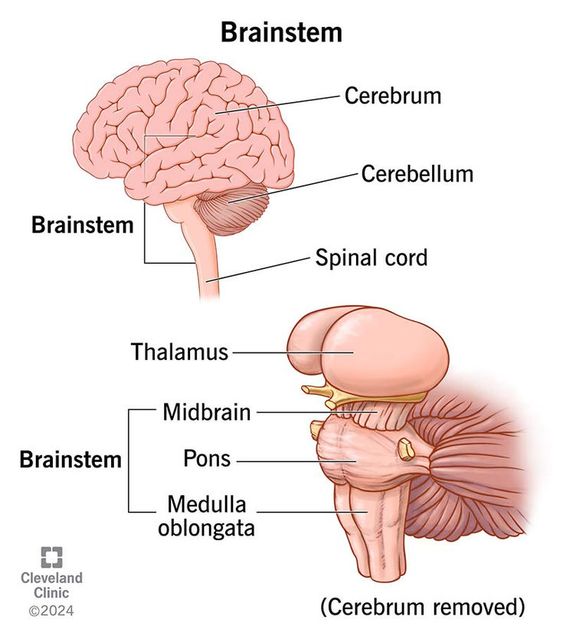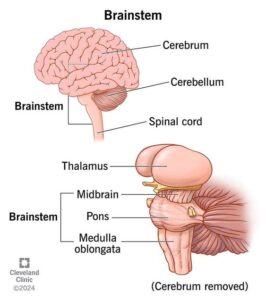
The medulla oblongata is a critical structure within the brainstem that plays a vital role in regulating many of the body’s autonomic functions. Located just above the spinal cord, it serves as a communication hub between the brain and the body, coordinating essential processes such as breathing, heart rate, and blood pressure.

What the Medulla Oblongata Is
- Regulatory Center: The medulla oblongata controls involuntary functions, including:
- Respiration: It helps regulate the rhythm of breathing.
- Circulation: It manages heart rate and blood vessel dilation.
- Reflexes: It is involved in reflex actions like swallowing, coughing, and vomiting.
- Anatomical Features: The medulla contains pathways for nerve fibers that relay information between the brain and spinal cord, ensuring efficient communication across the central nervous system.
- Part of the Brainstem: It is the lower part of the brainstem, situated between the pons and the spinal cord. It works closely with the pons and midbrain to coordinate motor and sensory pathways.
What the Medulla Oblongata Is Not
- Not the Entire Brain: Often confused as a synonym for the brain itself, the medulla is just one component of the central nervous system.
- Not the “Thinking” Center: It does not play a direct role in higher cognitive functions like reasoning, decision-making, or abstract thinking—functions typically associated with the cerebral cortex.
Common Mistakes People Make When Referring to the Medulla
- Confusing it with the Cerebellum: Some people mistakenly refer to the medulla when discussing coordination or balance, functions primarily managed by the cerebellum.
- Using it as a Synonym for “Brain”: The medulla is often erroneously considered the brain in discussions about thinking or intelligence.
- Oversimplifying Its Function: While it is essential for survival, its functions are frequently oversimplified to just “controlling automatic processes” without appreciating its complex regulatory roles.
Rethinking the Phrase “Use Your Medulla”
The phrase “use your medulla” to imply thinking or decision-making is misleading. This expression misrepresents the medulla’s actual functions and perpetuates confusion about its role in the nervous system.
Instead, consider using phrases that accurately reflect cognitive processes, such as:
- “Use your brain”: A straightforward way to encourage critical thinking.
- “Engage your mind”: This emphasizes active mental participation.
- “Think critically”: A more specific call to evaluate information and make decisions.
Conclusion
Understanding the medulla oblongata’s role and clarifying common misconceptions can enhance our discussions about brain function. By choosing more accurate language when discussing thinking processes, we can promote better awareness of how our brains work. The medulla may regulate vital functions, but our cognitive powers reside elsewhere—primarily in the cerebral cortex. Let’s celebrate the complexities of our brain and use language that reflects its true capabilities.





